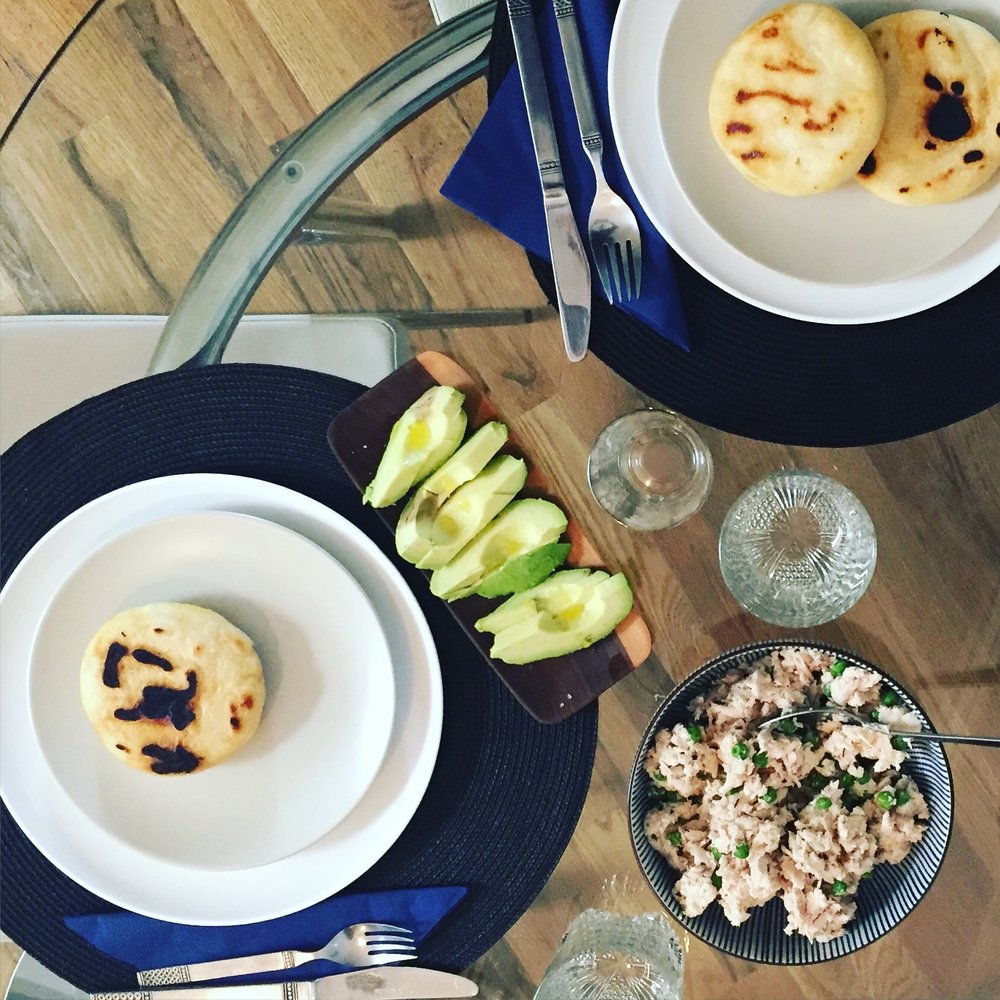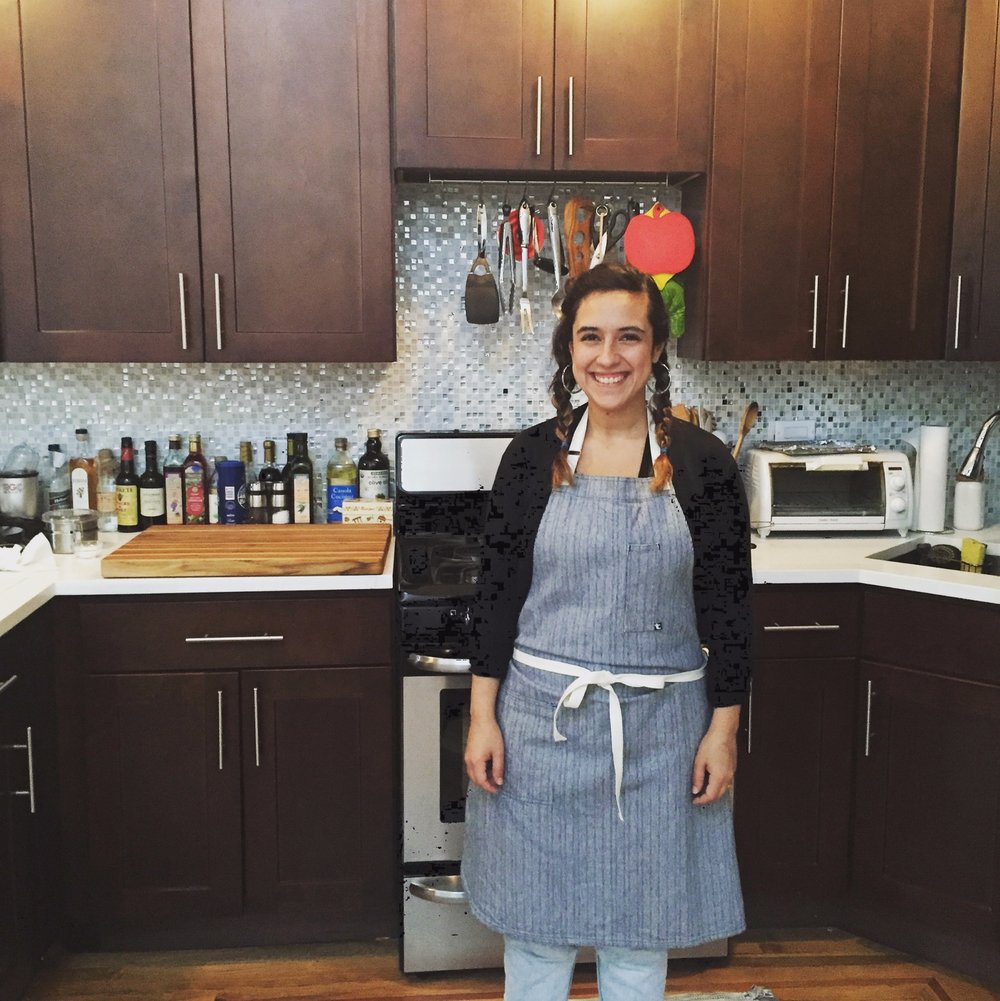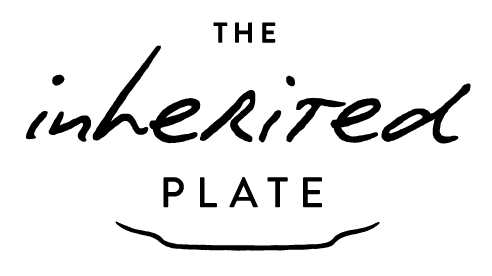Arepas: La Reina Pepiada

Andrea Lubrano answers the door to her Bushwick apt. Her brown hair is wound into two Laura Ingalls braids and she’s bedecked in her own hang out style lounge gear. Clogs, jeans, hoop earrings, and a dark blue denim apron.
Andrea leads me through the bright sunny space she shares with husband Eli Goldstein (AKA Elyte of DJ duo Soul Clap) to a modern kitchen in which she’s meticulously measured out a variety of ingredients into small glass bowls.
Together, we’re making arepas, a dish she’s watched her grandmother make again and again as a child.
Arepas, native to Colombia and Venezuela are made by combining precooked corn flour or masa, with warm water. “You knead the dough and add water until it’s soft and silky, but you have to add the water slowly to make sure you don’t get any lumps,” Lubrano expertly demonstrates.
In Colombia, the dough is mixed with cheese, salt, a little sugar, then griddled and eaten as is, often as part of breakfast.
In her native Venezuela, the plain masa dough is formed into small patties, griddled until golden, and baked until puffed. Piping hot, the arepa is sliced open and stuffed with fillings that run the gamut. From black beans, cheese, and fish, to beef or braised pork, arepas are also given special names depending on their stuffing.
Gluten free and bread-like, the arepa resembles the offspring of a pita and English muffin, but it’s entirely its own thing.
The popularity of the arepa rose in the 1950’s after the development of precooked corn flour. It turned this once laborious dish made once or twice a year on special occasions, into the country’s most popular and accessible late night snack.
“In the Andes, they’re big, round, flat and eaten like a bread with soup. Whereas on the coast and in the city, they’re smaller and fatter,” Lubrano explains.
Perhaps the most popular and classic Venezuelan arepa, La Reina Pepiada or “The Good Looking Queen,” was named after Venezuelan beauty queen Susana Duijm, who won The Miss World pageant in 1955.
The story goes that Duijm’s father visited an arepera in Caracas and was so charmed by the owner’s niece who was dressed up like a little princess in honor of his own Susana, that he promised to bring his daughter back to visit. When he did, the shop owner’s mother prepared a special arepa in her honor. It was stuffed with chicken salad, green peas, onion and avocado and it was coined la Reina Pepiada, pepiada(o) being the adjective to describe well dressed and attractive people in those days.
This is the arepa Lubrano shares with me for lunch today.
She mixes the arepa dough expertly, adding the water bit by bit until she gets the optimal, malleable consistency.
Just as her grandmother taught her, Andrea forms the dough into discs and griddles them until crusty and golden, then pops them into the oven.
The kitchen smells of fire-roasted corn and Stevie Knicks is playing on spotify.
She pulls a tray of arepas out of the oven and splits two open, scooping the excess dough from the center and assembling the arepas. “People who diet in Venezuela remove the middle and discard it.” I think of all those leggy Venezuelan hotties missing out on the fun.
To the little bits, she adds a pat of butter and some salt. “This was always my favorite part of eating arepas.”
We eat both. There isn’t nearly enough of the fluffy warm dough and salty butter. It has the same intoxicating effect as a bowl of warm, cheesy grits or polenta.
Next the crisp, still slightly warm arepa shell gives way first to the creamy avocado, then the savory chicken salad. With punchy little bits of onion and sweet green peas, it is a humble and perfect lunch, fit for a queen.

Serving Size: Makes 6 arepas
Ingredients
For the Arepas
2 cups masa (harina pan)
2 cups lukewarm water
2 Tbps. vegetable oil
Pinch of salt
Special Equipment:
Cast Iron Griddle or Skillet
For the Filling:
1 ½ cups finely shredded, pre-roasted chicken
3 Tbsp. finely diced red onion
½ cup defrosted frozen or steamed peas (cold)
¼ cup mayonnaise or vegan mayo
Salt and pepper, to taste
1 avocado, peeled and sliced lengthwise
Instructions

Preheat the oven to 350 degrees F.
Mix the flour and salt in a bowl. Add the oil and then slowly pour the water into the masa, gradually working the dough with back of your hand. It is crucial to add the water slowly to make sure you get rid of any lump.
Work the dough until it is no longer sticky but still soft and malleable.
Test the dough by rolling it into a ball. Flatten slightly into a pancake. If it cracks, it’s not ready and requires a little more water.
Heat cast iron skillet or griddle over medium high heat. Grease very lightly with canola oil.
While the skillet heats up, divide the dough into 6 equal pieces, roll into balls and flatten into a 3-4 inch discs. Cook until golden and crusty and flip.
Repeat on the opposite side and bake on a sheet tray for 20-25 minutes until puffed up, flipping halfway through cooking.
To assemble:
Slice the arepas in half. Fill with a few spoonfuls of chicken salad and garnish with a few slices of avocado. Enjoy it as your would a sandwich.
